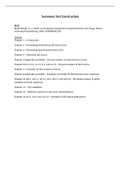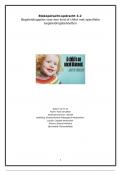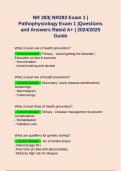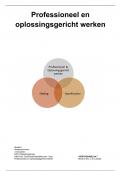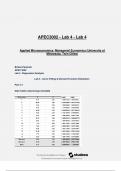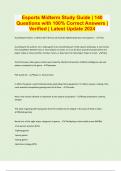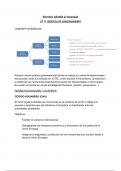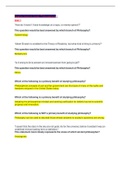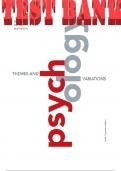Samenvatting
Summary Test Construction - A Conceptual Introduction to Psychometrics, ISBN: 9789490947293 (PSMM-6)
- Instelling
- Rijksuniversiteit Groningen (RuG)
This summary contains the chapters that must be learned for the Master Psychology course Test Construction at the University of Groningen. See the first page for a table of contents. Examples of the formulas are incorporated in the corresponding text part for better understanding. Good luck with st...
[Meer zien]
